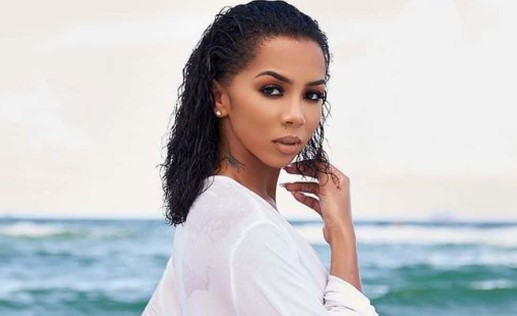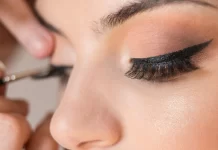Curly hair has a reputation for being dry and difficult to manage. So it’s no surprise that many people try to combat this by adding as much moisture as possible. However, such a thing as over-moisturizing your curls can lead to many problems. This article will explore what happens when you over-moisturize curly hair, how to recognize the signs, and what you can do to restore balance.
Understanding the role of moisture in curly hair
Before we delve into the effects of over-moisturizing, we must understand moisture’s role in curly hair. Naturally, straight hair is drier than curly hair. Because the curls make it harder for natural oils to travel down the hair shaft. As a result, curly hair needs more moisture to keep it healthy and hydrated. So, you can do this with the right frizzy hair products for curly hair. They come with a formula that is hydrating for your hair. Moreover, it makes the curls smooth and shiny.
As you know, moisture helps to keep curls defined, soft, and shiny. Moreover, it also helps to prevent breakage and split ends. However, too much water can lead to problems like insufficient moisture.
What happens when you over-moisturize curly hair?
Over-moisturizing curly hair can lead to a condition called “hygral fatigue.” This condition occurs when the hair absorbs too much moisture, causing it to swell and weaken. The excessive swelling and shrinking of the hair fiber due to repeated exposure to water. It damages the hair cuticle, leading to hair breakage and loss of elasticity.
Some signs you may need to over-moisturize your curly hair include hair that feels overly soft or mushy. Such hair takes longer than usual to dry, and hair that lacks definition or appears frizzy. In addition, if left unchecked, over-moisturized hair can become more prone to tangles, matting, and breakage.
To prevent hygral fatigue and over-moisturizing, you must strike a balance between moisture and protein in your hair. Protein helps to strengthen the hair fiber and restore elasticity, while humidity helps to keep the hair hydrated and flexible. So, it’s essential to use products that balance protein and moisture. Additionally, you should avoid overloading the hair with too much curly hair moisturizer.
If you suspect you have over-moisturized your curly hair, try incorporating protein treatments into your hair care routine. They are great for restoring strength and elasticity. Also, consider reducing the frequency of moisturizing or using lighter, less moisturizing products.
When you over-moisturize your curly hair, it can become limp, greasy, and unmanageable. Below are a few of the most typical indications. That your curls are over-moisturized:
Loss of curl definition: Over-moisturized curls tend to lose their shape and definition. They may become elongated, limp, and lifeless and not bounce back like usual.
Greasy or oily hair: Over-moisturized curls can become greasy or oily, even if you haven’t used heavy oils or products. This is because too much moisture can cause the scalp to produce more oil than it needs.
Flat hair: Over-moisturized hair can also become dull and lack volume. This is because the water or product weighs down the curls.
Frizz: Ironically, over-moisturized hair can also lead to frizz. The excess moisture can cause the hair to swell and become rough. Moreover, it also leads to frizz.
Itchy or irritated scalp: Over-moisturized hair can lead to an itchy or irritated scalp. Excess moisture can create an environment for bacteria or fungi to thrive.
How to restore balance to over-Moisturized curls?
If you’ve recognized the signs of over-moisturized curls, don’t panic. You can take steps to restore balance and bring your rings back to life.
Clarify your hair: The first step is to clarify your hair with a shampoo. This will help remove any product buildup or residue contributing to over-moisturization.
Reduce or eliminate heavy oils: If you’ve been using rich oils or butter to moisturize your hair, it’s time to cut back or eliminate them. Instead, opt for lightweight good moisturizer for curly hair. For instance, you can go with leave-in conditioners or water-based creams.
Balance moisture and protein: Over-moisturized hair may need a protein treatment to help restore balance. Protein helps to strengthen the hair and prevent breakage. But too much protein can also be problematic. So make sure to balance protein treatments with moisturizing treatments.
Avoid over-washing: While clarifying your hair is essential, you don’t want to over-wash it. This can eliminate its natural oils and lead to more dryness. Instead, aim to wash your hair once or twice a week, depending on your hair type and texture.
How often should you moisturize your hair?
The quantity and timing of moisturizing your hair Depend on several variables, including hair type, texture, and current state. In general, it is recommended to moisturize your hair at least once a week. But some hair types may require more frequent moisturizing.
If your hair is brittle or damaged, you may need to moisturize your hair more often. For instance, you should wash every other day or every few days. Conversely, you may need to water your hair less often if you have oily hair.
It is also essential to consider the products you use to moisturize your hair. Search for products created with your hair type in mind. Your products should contain ingredients that help retain moisture. For instance, they must include natural oils, shea butter, or glycerin.
Listening to your hair and adjusting your moisturizing routine is best. For example, if your hair feels dry or brittle, increase the frequency of moisturizing. On the other hand, if your hair feels greasy or weighed down, decrease the frequency.
Hair care regimen for curly hair
Cleanse: Use a sulfate-free shampoo or co-wash to cleanse your hair and scalp gently. Depending on your hair, you should wash it more frequently. But once or twice a week is usually sufficient for most curly hair types.
Condition: Apply a rich, moisturizing conditioner to your hair, focusing on the ends. You can detangle your hair with a wide-tooth comb or your fingers while the conditioner is in your hair. After that, you can rinse thoroughly with cool water.
Apply leave-in conditioner: Apply a leave-in conditioner working it through your hair from roots to ends. This will help keep your hair moisturized and defined.
Style: Apply your preferred styling product, such as a curl cream, gel, or mousse. Scrunch your hair after applying it to wet hair. Moreover, you can set them upwards to encourage curl definition.
Diffuse or air-dry: You can diffuse your hair in a low-heat setting. Using a diffuser, use a low heat setting to avoid heat damage.
Refresh: Spritz your hair with water and a leave-in conditioner. Moreover, you can use a curl-refreshing spray to refresh your curls between washes.
Deep condition: Once a month, you can use a deep conditioning treatment to nourish your hair and restore moisture. Apply the treatment to your hair, and place a shower cap over it. Lastly, keep it there for 30 to 60 minutes before rinsing it.
Remember, everyone’s hair is different. So it’s essential to listen to your hair’s needs and adjust your hair care regimen accordingly.
Conclusion
In conclusion, over-moisturizing curly hair can lead to hygral fatigue. So, it can damage the hair cuticle, resulting in hair breakage, loss of elasticity, and frizz. Balancing protein and moisture in your hair care routine is crucial to avoid over-moisturizing. Using products that contain a balance of protein and water, and avoiding too heavy products, can help prevent hygral fatigue. Moreover, maintain healthy, hydrated curls. If you suspect you have over-moisturized your curly hair, incorporate protein treatments into your routine. Additionally, reducing the frequency of moisturizing can help restore strength and elasticity to your curls.
















